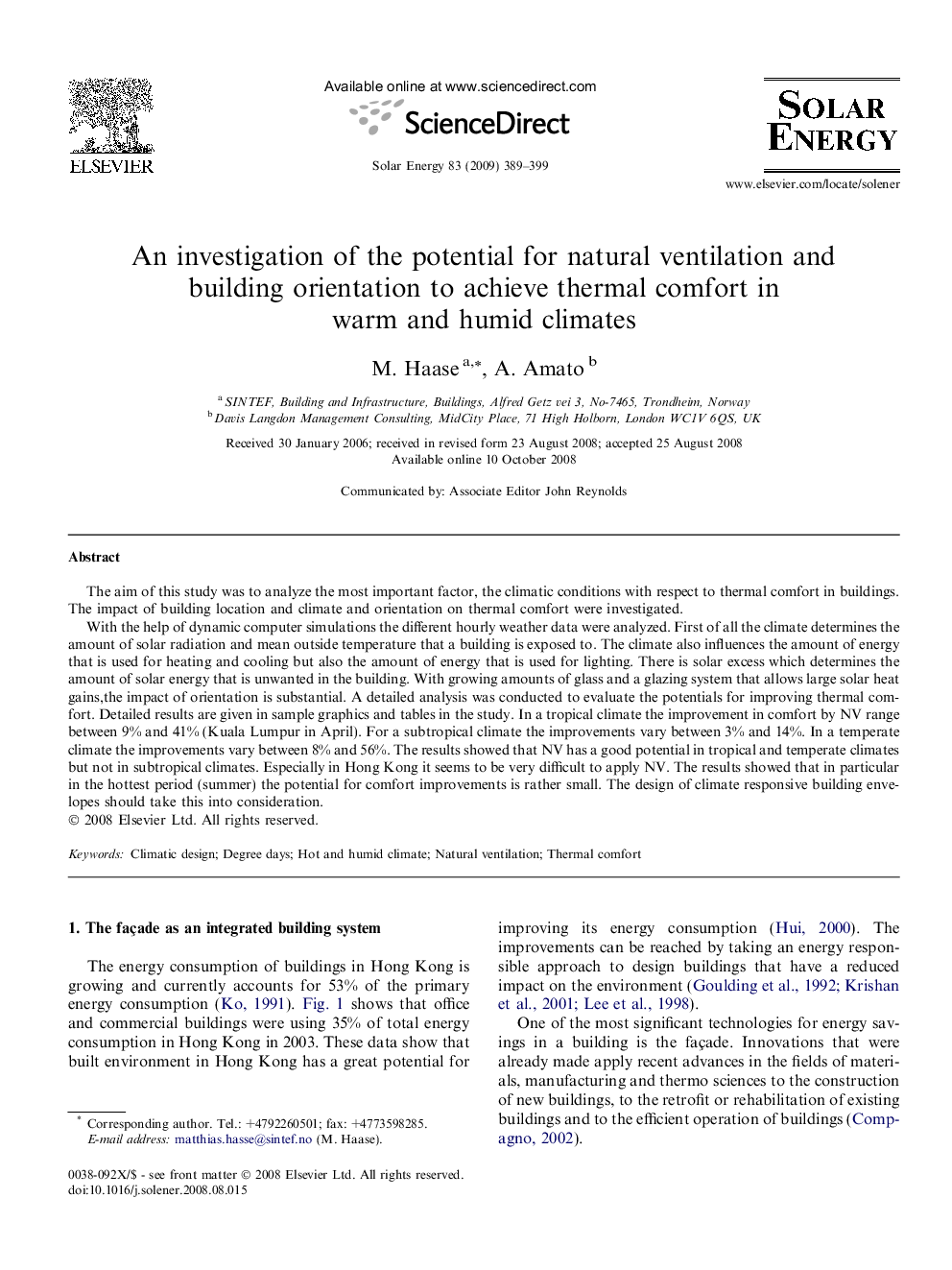| Article ID | Journal | Published Year | Pages | File Type |
|---|---|---|---|---|
| 1551957 | Solar Energy | 2009 | 11 Pages |
The aim of this study was to analyze the most important factor, the climatic conditions with respect to thermal comfort in buildings. The impact of building location and climate and orientation on thermal comfort were investigated.With the help of dynamic computer simulations the different hourly weather data were analyzed. First of all the climate determines the amount of solar radiation and mean outside temperature that a building is exposed to. The climate also influences the amount of energy that is used for heating and cooling but also the amount of energy that is used for lighting. There is solar excess which determines the amount of solar energy that is unwanted in the building. With growing amounts of glass and a glazing system that allows large solar heat gains,the impact of orientation is substantial. A detailed analysis was conducted to evaluate the potentials for improving thermal comfort. Detailed results are given in sample graphics and tables in the study. In a tropical climate the improvement in comfort by NV range between 9% and 41% (Kuala Lumpur in April). For a subtropical climate the improvements vary between 3% and 14%. In a temperate climate the improvements vary between 8% and 56%. The results showed that NV has a good potential in tropical and temperate climates but not in subtropical climates. Especially in Hong Kong it seems to be very difficult to apply NV. The results showed that in particular in the hottest period (summer) the potential for comfort improvements is rather small. The design of climate responsive building envelopes should take this into consideration.
